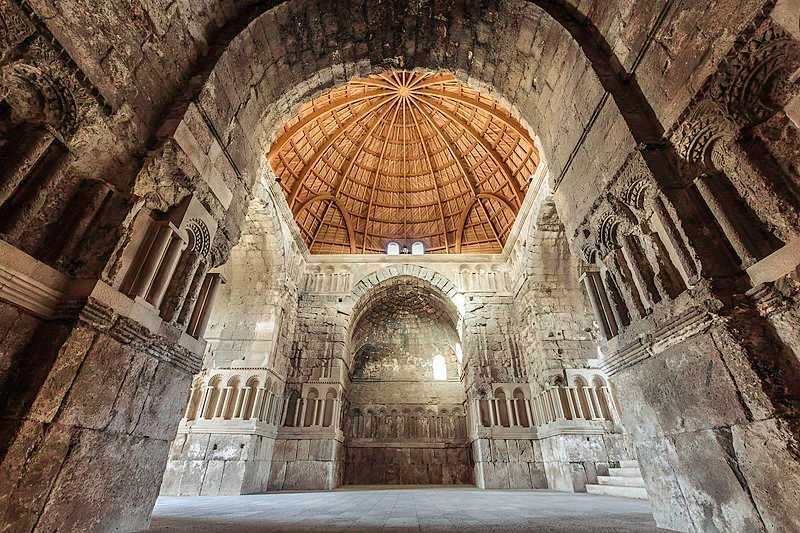Cultural, historical, adventure, and custom customized trips are just a few of the tours that Deluxe trips offer in Egypt and Jordan.

Perched atop Amman's highest hill, where the city's highest point disintegrates into a sea of skyscrapers, rises the Umayyad Palace, the most beautiful ruin of the Amman Citadel. The ancient complex is more than a testament to Jordan's Islamic past; it is a site that reflects the city's built-up past. For tourists to Amman, the Umayyad Palace cannot be missed — providing insights into early Islamic architecture, bird's eye perspectives of the capital city, and an opportunity to explore one of Amman's most significant ancient landmarks. History of the Umayyad Palace Jordan, Umayyad Palace Amman The Umayyad Palace of Amman was constructed during the reign of the Umayyad Caliphate during the 8th century. It was constructed as a resident and administrative palace for the provincial governor. It was sadly hit by an extensive earthquake that destroyed most of the palace in approximately 749 AD, leaving huge ruins that still narrate stories of its size. Though it was partially damaged, archaeologists have unveiled information on how it was as a power and authority symbol in Islamic Jordan. Architectural Details of the Umayyad Palace The domed audience chamber of the palace is one of the major attractions, refurbished to its former shape. The chamber is the most photographed location within the Amman Citadel, and its wood dome is dominant in the desert sky.
There are other architectural aspects like: Residential Quarters: Rubble of rooms and living areas that once accommodated the officials, Water Cisterns: Intelligent underground cisterns where water was stored for the complex, Roman & Byzantine Influence: The palace combines early Islamic architecture with elements of Roman and Byzantine style representing the multicultural history of Amman. The location is an intriguing insight into how civilizations upon civilizations were constructed, the palace having reused structures from earlier civilizations. Visiting the Amman Citadel and Umayyad Palace The Umayyad Palace Jordan is situated in the larger Amman Citadel (Jabal al-Qal'a), a historic area that houses monuments of Roman, Byzantine, and early Islamic eras. On a visit, it is also possible to see: The Temple of Hercules: An enormous Roman temple with gigantic columns. The Byzantine Church: Ruins of a 6th-century church. The Jordan Archaeological Museum: A compact but handy museum with exhibits from Jordan's prehistoric to Islamic eras. Practical Information: Opening Hours: Usually open every day, with longer hours in summer. Entrance Fees: Part of the Jordan Pass or available for sale at the entrance. Best Time to Go: Late afternoon, particularly sunset, when the golden light adds an extra mystique to the ruins.
Visiting the Amman Citadel Umayyad Palace is usually paired with other cultural and historical sites:
Roman Theater of Amman: A Roman-period amphitheater well preserved downtown. Downtown Amman: Cosmopolitan souks, markets, and traditional restaurants in order to immerse oneself in local life. Day Trips: Most tourists combine Amman sightseeing with a day trip to Roman Jerash (a nearby city north of Amman), the Dead Sea, or iconic Petra the rose city of Jordan. Visiting the Umayyad Palace Tips, In attempt of the best of visiting the Umayyad Palace and Amman Citadel, consider the below tips: Wear Comfortable Shoes: The site entails walking on uneven rocks and ruins. Dress Conservatively: Amman is a conservative city, and it is advisable to dress conservatively. Bring Water and Sunscreen: The location is open and extremely hot in summer. Guided Tours or Self-Guided: Having a guide will enhance your experience with added historical context, but self-guiding allows for flexibility to go wherever you want.
The Umayyad Palace in Amman is more than an old ruin — it's a glimpse into Jordan's Islamic past and a testament to the multicultural history of the city. From the domed reception hall to surrounding Roman and Byzantine ruins, the palace is a reminder of Amman's significance through centuries of history. For tourists, a visit to the Umayyad Palace is an opportunity to see the legacy of Jordanian heritage while experiencing panaromic views of the capital. Combined with other attractions such as the Temple of Hercules, Petra, Jerash, and Wadi Rum, it provides an experience of a lifetime of Jordan's heritage.
Discover now our answers to the most common questions that may come to your mind about tourism and trips to Egypt
Cultural, historical, adventure, and custom customized trips are just a few of the tours that Deluxe trips offer in Egypt and Jordan.
The Dead Sea, Petra in Jordan, the Pyramids of Giza, Luxor's historic temples, and many other famous sites can be expected to be explored with Deluxe Tours.
offer a hassle-free holiday, Deluxe Tours' packages generally include lodging, transport, meals, guided tours with experienced local experts, and entry fees to attractions.
Spring (March to May) and fall (September to November) offer the finest weather for sightseeing and outdoor activities, making those months the best times to visit Egypt and Jordan.
These two countries are close by, only a 1.5-hour flight apart, and when combined, offer a variety of distinctive experiences. We advise you to spend at least 12 days visiting both countries for a truly unforgettable experience
Combining the eclipse viewing with visits to historic sites like the Pyramids of Giza, the Valley of the Kings, and a Nile River cruise are highly recommended.
